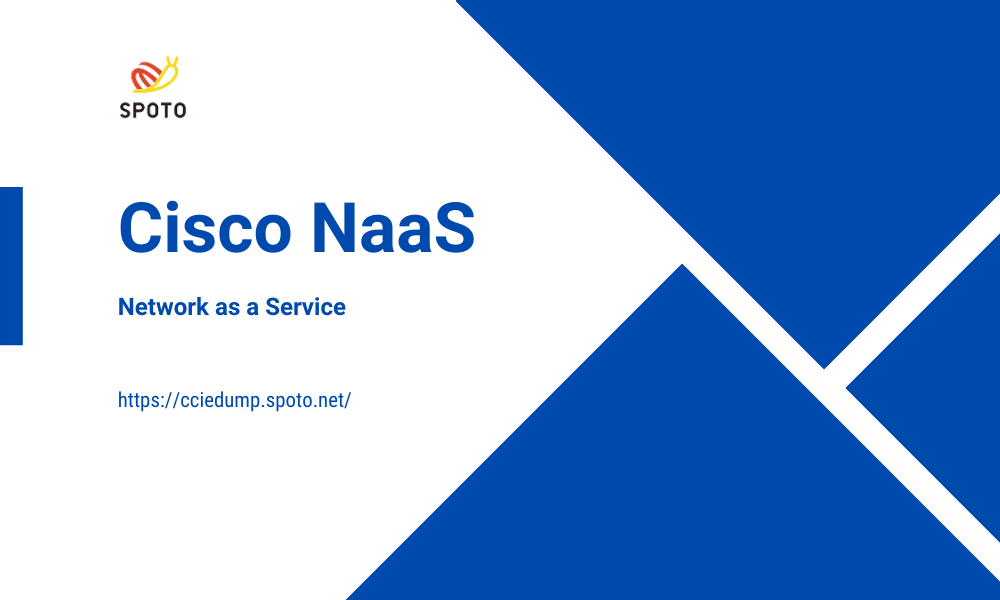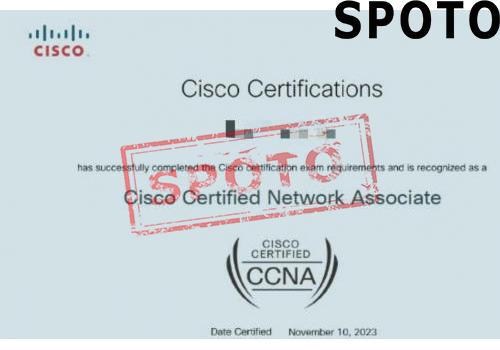
Table of Contents
Enterprise IT specialists will soon be able to select network infrastructure components from a menu of possibilities, have them customized to their specific business needs, and have the entire system delivered and operational in a matter of hours. Network-as-a-Service (NaaS) is the name of the idea, and it has been around for a while in various conditions in the service provider sector.
As businesses began to embrace cloud computing and its consumption-based capacity model, the as-a-service idea began to gain traction. NaaS represents a paradigm shift in how networks get managed, operated, and consumed. Among the prominent players in this domain, Cisco, a global technology leader, has presented its unique view on NaaS. This article delves into Cisco's perspective on NaaS and examines its implications for the future of networking.
Why Do Businesses Choose NaaS?
In keeping with the traditional network paradigm, actual networks with routers, switches, and licenses require capital expenditures (CapEx). This IT strategy necessitates a tall technical proficiency, planning, and execution time.
- Continuous updating and patch management are crucial because of the quick growth of technology and security concerns.
- An engineer must install equipment at several places as part of the manual process of supplying a new service.
- Traditionally, providing services and fixing problems have been laborious operations.
IT teams have been unable to keep up with the increase in network complexity. In comparison to internally managed networks, NaaS is a better option. An all-inclusive branch office or store-as-a-service that includes a network, WAN circuits, and wireless for a single monthly cost is one of the many use cases that are compatible with NaaS. For enhanced convenience, they could also provide other services like safety and collaboration.
Understanding Network as a Service (NaaS):
At its core, NaaS involves the provision of networking resources and services on a pay-as-you-go basis, much like other cloud services. Instead of owning and managing physical network infrastructure, businesses can leverage NaaS to access networking functionalities via the cloud. It provides flexibility, scalability, and cost-effectiveness, enabling organizations to focus on their core competencies rather than grappling with network complexities.
Cisco's Take on NaaS:
Cisco, renowned for its networking solutions, has embraced the NaaS concept with unique insights. The company envisions NaaS as a pivotal element of its broader intent-based networking strategy. Intent-based networking aims to create a more intuitive and automated network management environment, reducing manual interventions and minimizing human errors. NaaS fits seamlessly into this vision, as it allows organizations to define their networking requirements through high-level intents, which get then translated into automated network configurations.
Vital Aspects of Cisco's NaaS Approach:
- Automation and Orchestration: Cisco's NaaS emphasizes the automation of network provisioning, management, and monitoring. By automating routine tasks, businesses can free up IT personnel for more strategic activities. It aligns with Cisco's drive to provide networks that can adapt dynamically to changing business needs.
- Service Customization: Cisco's NaaS model enables businesses to customize their network services based on their specific requirements. This flexibility ensures that organizations can build networks that cater to their unique needs, thereby promoting efficiency and agility.
- Security Integration: Security is a paramount concern in modern networking. Cisco's NaaS strategy incorporates robust security features, embedding them deeply into the network architecture rather than treating security as an afterthought. This approach enhances the overall resilience of the network.
- Scalability: Organizations may scale their network resources up or down with NaaS without making significant initial expenditures. Cisco's strategy guarantees seamless growth and is affordable, which is essential for expanding organizations.
- Analytics and Insights: Cisco recognizes the value of data-driven insights in network management. Their NaaS solution incorporates advanced analytics tools that provide real-time visibility into network performance, helping businesses make informed decisions and optimize their operations.
- Through proactive management, increase network uptime: NaaS's anticipatory advice and management capabilities lower the chance of interruption. To maximize NaaS deployment with the best configuration, AIOps (artificial intelligence for IT operations) or highly skilled networking specialists are typically a component of proactive management tasks or disciplines. This proactive management approach aims to maximize network performance by identifying and resolving issues before they result in service interruptions.
- Enhanced performance and boosted output: When your network performs at its highest level, with the fewest issues and downtime, IT staff (and other employees) can carry out their daily tasks more successfully and efficiently. Overall productivity gets raised as a result. The ideal NaaS partner would provide you with prior notice of monthly reports so you can identify issues and significant trends.
Implications for the Future:
Cisco's view of NaaS aligns well with the trajectory of the IT industry. As digital transformation continues to reshape business operations, flexible and responsive network architectures become imperative. NaaS, as envisioned by Cisco, addresses these needs by offering a holistic solution that encompasses automation, customization, and security.
The future implications of Cisco's NaaS strategy are far-reaching:
- Business Agility: NaaS allows businesses to pivot swiftly in response to changing market conditions. This agility is crucial for staying competitive in fast-paced industries.
- Resource Optimization: Organizations may optimize their resource allocation, resulting in cost savings and operational efficiencies, by doing away with the necessity for massive internal network infrastructure.
- Innovation Acceleration: With the burden of network management lifted, IT teams can focus on innovative projects that drive business growth rather than getting bogged down by routine maintenance.
- Evolving Skill Sets: As networks become more automated, IT professionals will need to adapt their skill sets. Cisco's NaaS approach encourages this evolution, with a focus on leveraging technology to augment human capabilities.
- Ecosystem Collaboration: NaaS opens the door for collaborative ecosystems, where businesses can seamlessly integrate their networks with partners, suppliers, and customers. It paves the way for new business models and opportunities.










